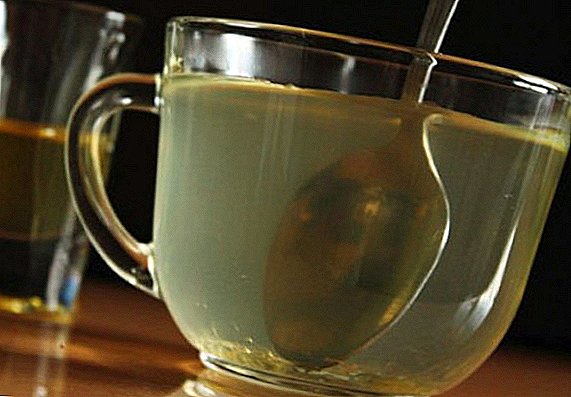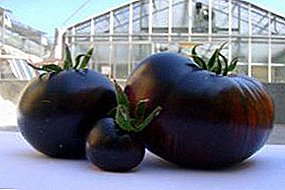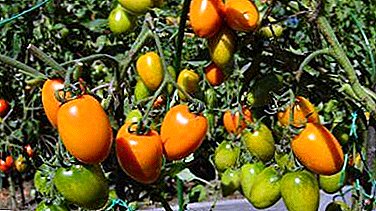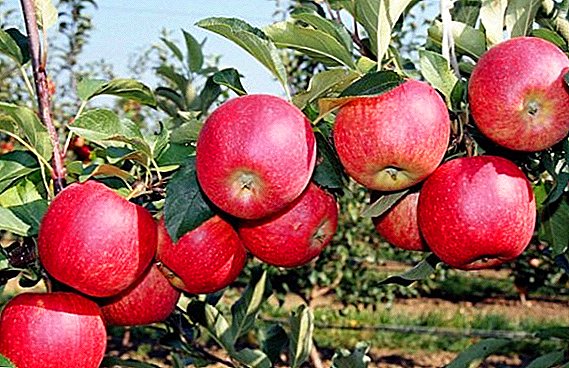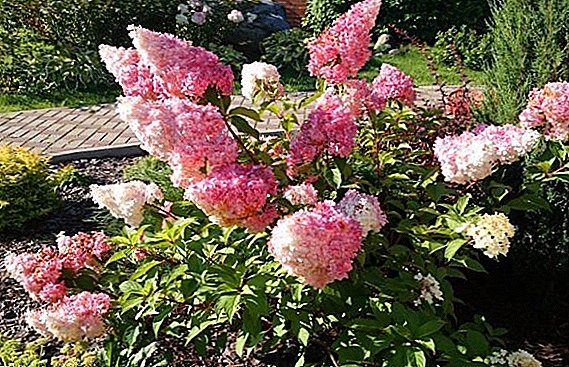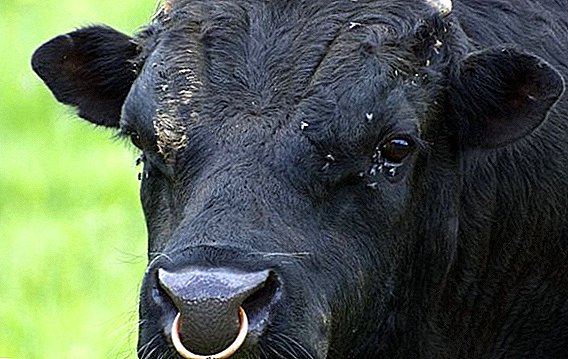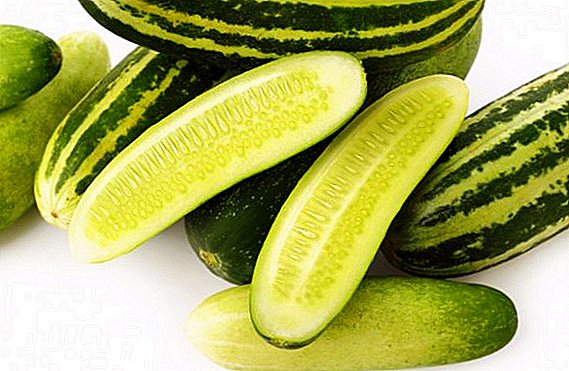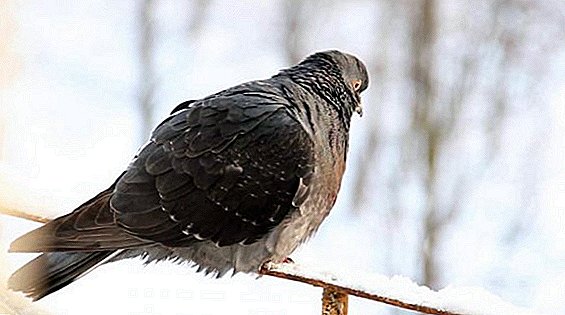 Each owner, who is engaged in the maintenance and breeding of pigeons, is faced with problems arising during the cold season. Even if individuals do not belong to capricious species, preliminary preparations, as well as additional care, are simply necessary. Next, we consider the requirements for the room in the winter, tell about the care and diet of pigeons during severe frosts.
Each owner, who is engaged in the maintenance and breeding of pigeons, is faced with problems arising during the cold season. Even if individuals do not belong to capricious species, preliminary preparations, as well as additional care, are simply necessary. Next, we consider the requirements for the room in the winter, tell about the care and diet of pigeons during severe frosts.
Requirements for dovecote
Before the onset of cold weather, care must be taken to create a comfortable environment in the dovecote, in order to exclude deterioration of immunity and the appearance of colds. 
Temperature
Pigeons do not belong to capricious birds, which need to provide “tropical” housing conditions in winter, but decorative species also do not tolerate severe frosts. The maximum low temperature that pigeons endure painlessly is -7 ° C. If the room becomes colder, then you need to either increase the caloric intake or provide additional heating.
Low air temperature is not a serious problem, but in the cold it also freezes feed and water. And if plumage protects the bird from cold air, then if frozen food or cold liquid gets into the body, hypothermia cannot be avoided.
Did you know? Pigeons meet their pair before full maturity, after which they remain faithful all their lives. It is for this reason that breeders always buy pigeons in pairs so that they do not suffer without the second half.
We should also take care of the insulation:
- it is necessary to cover all the cracks;
- if possible, install double-glazed windows that allow you to keep warm;
- it is recommended to sheathe the walls with heat insulating material (polystyrene, drywall). So that the pigeons did not peck the trim, they put over them chipboard / fiberboard;
- care must be taken to insulate the roof, which can be sheathed with the same materials.

Lighting
In the summer, you can get by with sunlight, but in winter the daylight hours are reduced, so there is a need for additional lighting. Standardly used incandescent bulbs. The source should not be strong, so you can do 1-2 bulbs of 50 watts. It is recommended to artificially extend the daylight hours to 12-13 hours so that the bird does not fall asleep during the evening feeding.
Important! During heavy cold weather, daylight hours can be increased up to 14-15 hours, as well as introduce an additional meal.
Ventilation
To ensure the normal exchange of air is installed two pipes - supply and exhaust. The first is mounted on the ceiling, and the second at a height of 15 cm from the floor. In winter, ventilating dovecote is problematic, since it creates the danger of hypothermia. For this reason, gate valves are installed on the intake and exhaust pipes, which partially overlap the air inlet and outlet. Thus, it is possible not only to exclude the appearance of a draft, but also to significantly increase the temperature in the room. 
Cleaning and disinfection
In the cold season, disinfection becomes the real test, especially if the temperature outside the window drops to critical levels. Refusing to clean the room is not possible, so it is mandatory once a month to complete the cleaning of the pigeon house using disinfectant chemicals. At the time the bird is relocated to a comfortable place with a similar temperature.
Read also about how to feed pigeons, how to build a dovecote and how to breed pigeons.
Cleaning is carried out as follows:
- in the process of cleaning should be treated all surfaces indoors, including the ceiling;
- feeders and drinkers are pre-removed;
- tools that are used to care for pigeons should also be sanitized, processed;
- during severe frosts, heated water is used to dilute chemicals;
- preference is given to drugs that dry quickly, and are also capable of destroying dangerous microorganisms at sub-zero temperatures.
Important! It is forbidden to return the bird to the dovecote until the disinfectant solution is completely dry.
What to feed pigeons in winter
The winter diet is characterized by increased calorie content, since the bird needs to spend energy on warming its own body. Also in winter there are no many types of feed, and the need for vitamins and minerals is only increasing, so you need to properly make the menu. 
What can
Cereals:
- oats;
- barley;
- corn.
- lentils.
- carrot;
- cabbage;
- boiled potatoes.
Check out the list of the most productive meat pigeons.
Fruits:
- apples;
- bananas.
- rapeseed;
- sunflower seeds;
- linen;
- wheat bran;
- crushed lime;
- meat and bone meal;
- vitamin and mineral premix.

Important! Mandatory give river sand and brick chips.
What not
It is not recommended to give in winter:
- wheat;
- peas;
- millet;
- Vic;
- buckwheat.
It is forbidden to give:
- white, gray, black bread;
- milk;
- cheese;
- citrus;
- fish;
- meat and meat products;
- foods containing sugar, flavors, colors, salt;
- fats (lard, butter and sunflower oil, sour cream).

What vitamins to give
If there is no opportunity to diversify the diet with vegetables and fruits, then you need to buy a special premix that will help the birds survive the winter, and also not “earn” vitamin deficiency in early spring. Vitamins necessary for normal vital activity: A, E, D, K, C. Note that there is a complex of these vitamins for sale, which are sold in a form accessible to pigeons.
If it is not possible to purchase the factory version, then remember that the above vitamins, except ascorbic acid, are fat soluble, respectively, they are absorbed only with fats, and then accumulate in adipose tissue and liver. Lack of vitamins of group B, as a rule, does not occur, as they are contained in the grain, which prevails in the winter diet of birds.  Vitamin C comes along with root vegetables. Additional administration is necessary only if a decrease in immunity is diagnosed. Vitamin C is water-soluble, so it quickly enters the bloodstream and is also rapidly consumed by the body. Stocks are not formed even with surplus, therefore, it is necessary to constantly maintain its level.
Vitamin C comes along with root vegetables. Additional administration is necessary only if a decrease in immunity is diagnosed. Vitamin C is water-soluble, so it quickly enters the bloodstream and is also rapidly consumed by the body. Stocks are not formed even with surplus, therefore, it is necessary to constantly maintain its level.
How to water doves in winter
Remember that giving pigeons in the winter snow or meltwater is strictly prohibited. Such actions lead to severe hypothermia, which is why the bird will get sick at best and will die at worst. This applies not only to capricious breeds, but also to pigeons accustomed to severe frosts.
Did you know? In the XYII century, pigeon droppings were used for the extraction of nitrate, which is part of gunpowder. At that time, the English king issued a decree according to which the litter of all pigeons in the country belonged to the state.
There are three ways to solve the problem:
- Every 2-3 hours to change the water to warm.
- Install a special heated drinker.
- Several times a day, pour a small amount of water into the trough, which will last the pigeons for half an hour.
It is not necessary to identify the birds that are in captivity with their wild brothers. City pigeons live 3 times less, and often suffer from various diseases. Therefore, in winter, create the most comfortable conditions for your birds, so that they continue to give you positive emotions.


